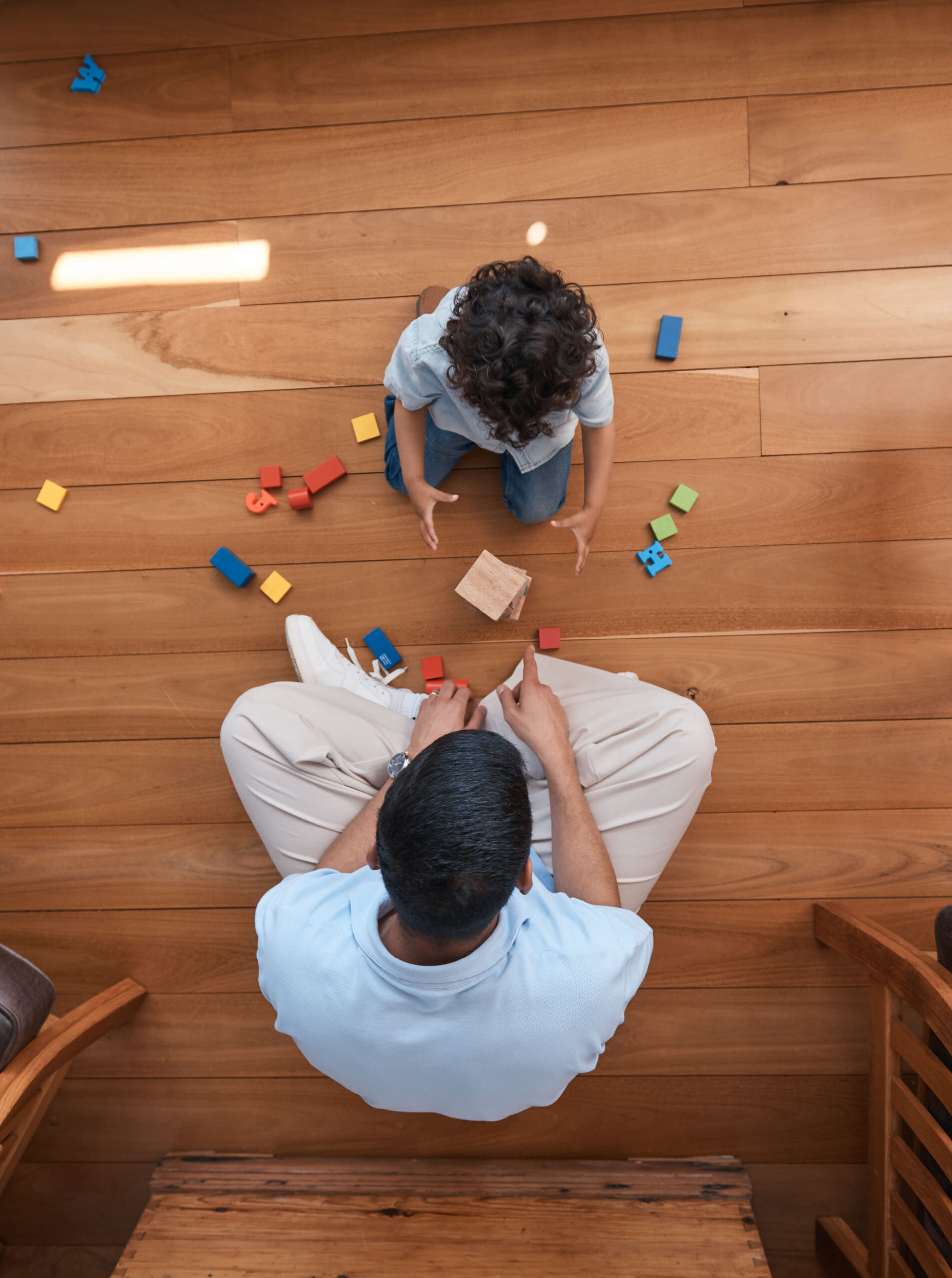What Is the Umbrella of ABA?
Think of ABA as an umbrella covering a variety of teaching strategies—from Natural Environment Teaching to Discrete Trial Training and everything in between. We mix and match these tools so therapy feels natural, playful, and effective.

What Does an ABA Session Look Like?
ABA therapy is highly individualized. No two sessions look exactly the same — they are designed around the child’s unique needs, preferences, and developmental goals. A typical session may include:
-
Play-Based Activities: Learning through play is a core part of our approach. Therapists embed skill-building into games, toys, and daily routines.
-
Skill Building: Sessions may focus on communication, self-help skills, social interaction, school readiness, or emotional regulation.
-
Positive Reinforcement: Therapists use encouragement and rewards to help children learn and repeat positive behaviors.
-
Data Collection: Therapists track progress throughout each session to adjust teaching strategies and ensure meaningful growth.
Depending on the child’s program, sessions may take place at home, in the clinic, at school, or in the community. They are typically delivered one-on-one by a trained Registered Behavior Technician (RBT) under the supervision of a Board Certified Behavior Analyst (BCBA).
Therapy Techniques In ABA
Below are the evidence-based teaching strategies and skill-building approaches that sit “under the umbrella” of Applied Behavior Analysis.
Discrete Trial Training (DTT)
What It Is & Why We Use It
Structured, one-to-one teaching that breaks new skills into clear, repeatable steps. Ideal for early learning (e.g., matching, requests) and rapid skill acquisition.
Natural Environment Teaching (NET)
What It Is & Why We Use It
Therapy woven into everyday activities—playtime, meals, playgrounds—so children learn when and where they naturally use the skill. Builds real-world independence.
Verbal Behavior (VB)
What It Is & Why We Use It
Focuses on functional communication—getting needs met, sharing ideas, and social language—by teaching the “why” behind words, not just the words themselves.
Precision Teaching
What It Is & Why We Use It
Uses timed practice and data tracking to build speed and accuracy in academic or daily-living skills, turning shaky skills into fluent, automatic ones.
Pivotal Response Training (PRT)
What It Is & Why We Use It
Play-based sessions that target “pivotal” areas like motivation and self-initiation. Strengthening these areas sparks growth across many other skills.
Early Start Denver Model (ESDM)
What It Is & Why We Use It
An evidence-based, play-rich approach for toddlers and preschoolers that blends ABA principles with developmental milestones to nurture social engagement and joint attention.
Inclusion Support
What It Is & Why We Use It
Step-by-step guidance that helps children succeed in typical classrooms or groups—first with direct therapist support, then fading to independence.
Desensitization
What It Is & Why We Use It
Gradual, supportive exposure to challenging experiences—haircuts, dentist visits, new foods—so children can participate comfortably and safely.
Self-Management Skills
What It Is & Why We Use It
Teaches children to follow routines, manage emotions, and track their own progress (e.g., toileting, brushing teeth, dressing). Promotes long-term independence.
Leisure Skill Building
What It Is & Why We Use It
Expands each child’s interests and hobbies by pairing new activities with existing favorites, opening doors to richer recreation and downtime.
Community Skills
What It Is & Why We Use It
Practicing real-life outings (grocery store, doctor, library) so children learn to tolerate sensory demands, follow directions, and feel confident in public.
Social Skills Training
What It Is & Why We Use It
Small-group or one-to-one lessons that teach sharing, conversation, friendship building, and family interaction through role-play and peer modeling.
What Can ABA Therapy Help With?
Communication Skills:
Teaching verbal and nonverbal ways to communicate wants, needs, and feelings.
Daily Living Skills
Helping with tasks like brushing teeth, getting dressed, toilet training, and mealtime routines.
Social Skills
Building friendships, taking turns, and learning how to interact with others appropriately.
Behavior Reduction
Addressing behaviors that may interfere with learning or safety using respectful, assent-based methods.
Emotional Regulation
Teaching coping skills, recognizing emotions, and managing frustration or anxiety.
School Readiness
Supporting focus, task completion, and following instructions in preparation for school settings.
